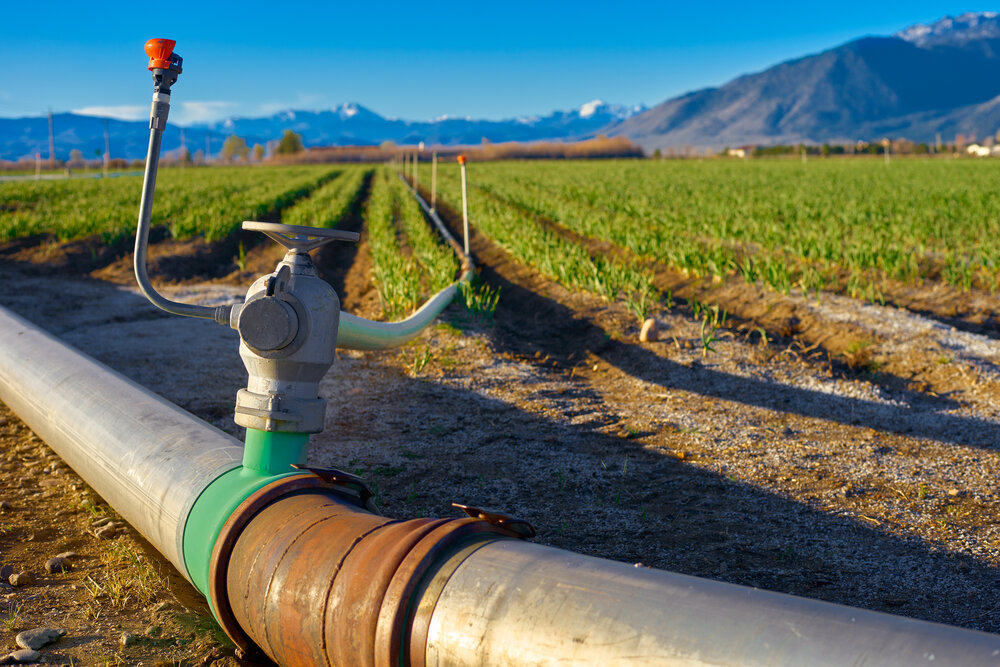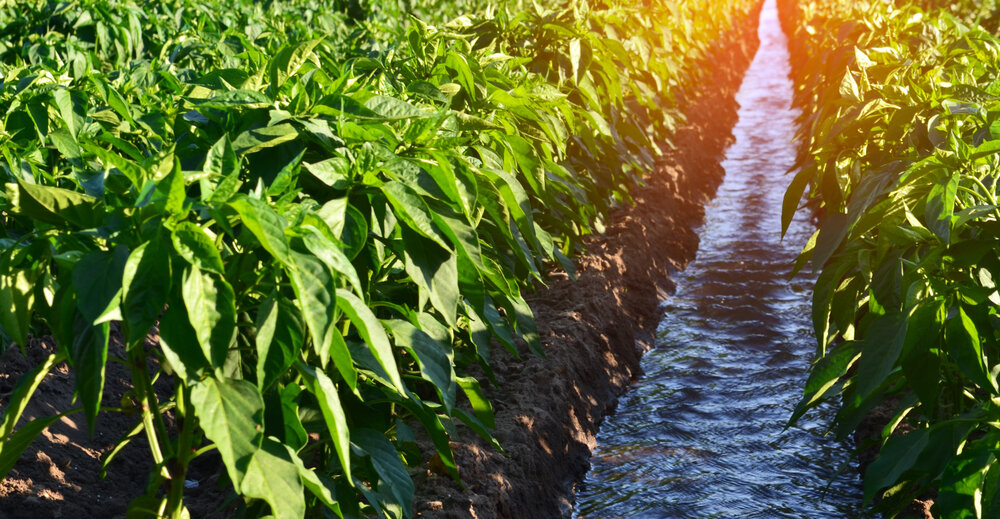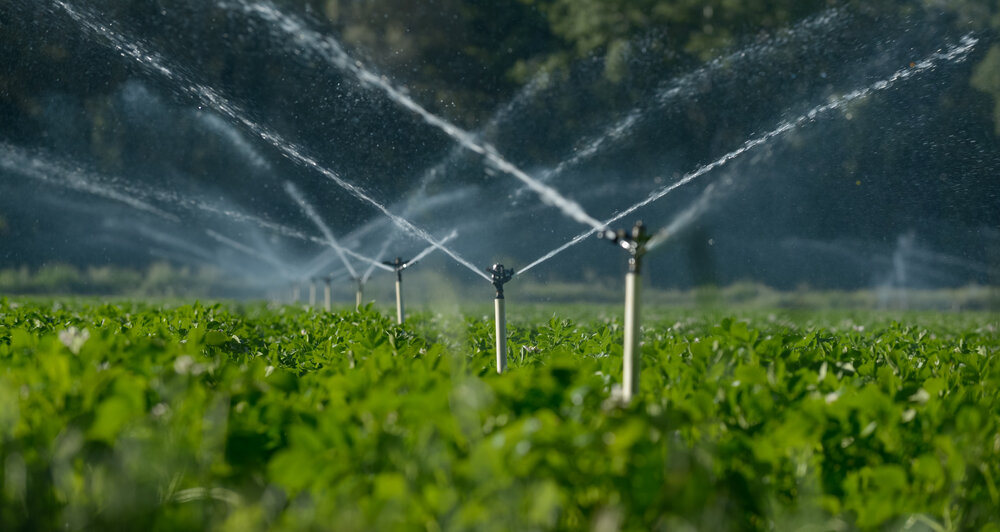Border and Basin Irrigation are similar types of surface irrigation systems in as much as they both disperse a uniform sheet of water over the field. With Basin Irrigation, water is applied to a level field surrounded by dykes that make the water “pond” for a while.
The Difference Between Basin Irrigation and Border Irrigation
Border Irrigation, on the other hand, involves a slightly sloping field in which a series of rectangular dykes are constructed. They break the field up into rectangular strips down which the water flows. However, unlike Basin Irrigation, where the perimeter of the field is surrounded by dykes on all four sides, with Border Irrigation, there is no dyke at the end of the field, meaning that instead of ponding, the water is allowed to drain off.
Improving the Efficiency of Surface Irrigation Systems
The efficiency of surface irrigation systems can be improved in two ways.
- By ensuring that the field in question has the right characteristics for surface irrigating.
- By making use of technologies that incorporate more control over water usage.
Field Characteristics
It is important (a) that the gradient should be less than 3% and (b) that the slope should be uniform across the field.
It is also better if the soil texture is of a heavier texture such as clay or loam. This is because these types of soil possess lower infiltration rates.
Less infiltration means a faster advancement of irrigation water which also reduces loss through deep percolation. Heavier soils also have better water retaining capacities which suits large amounts of surface water being applied less often.
The supply of water and its rate of flow must be sufficient to distribute the flow downfield expediently while minimising soil erosion.
Without these characteristics, a significant quantity of water will escape through runoff, despite the fact that hi-tech water controlling management techniques might be in use.
However, once the above-mentioned characteristics are in place, it opens up the possibility of introducing several different technologies, some quite simple and some more complex, in order to better water application, something we are going to explore in the next section.
Basic Low-Tech Improvements
Simply digging canals, channels or ditches to facilitate the delivery of surface irrigation water opens up the risk of losing significant amounts of water before it ever reaches the fields. Plastic linings can be introduced, or the excavations can be lined with concrete to reduce seepage.
Another option is the use of aluminium or PVC piping which kills two birds with one stone. As well as eliminating seepage, it also drastically cuts loss through evaporation.
You need to be familiar with the irrigation requirement of a field of crops in order to bring about efficiencies. If, for example, too much water is applied – more than can be stored in the crop root zone - you can be wasting money, nutrients and time. You might also be guilty of creating soil salinisation and promoting the growth of weeds.
In places where either or both irrigation water and soil contain high levels of salt, the depth of irrigation needs to be increased in relation to the level of salinity to promote leaching of salt beneath the root zone while facilitating better conditions for water extraction through crops' root systems.
Introducing Flow Cutback
The proportional difference between surface runoff and deep percolation is a key area. The problem of deep percolation can be addressed by increasing the rate of flow at the field inlet as high as possible without causing too much soil erosion. The increased rate of flow means less deep percolation, but it also promotes more runoff at the exit end.
On the other hand, while reducing the inflow rate lessens the amount of runoff, it also means more deep percolation at the inlet end of the field.
One solution is setting up a faster inflow that doesn't cause excessive erosion, which results in pushing the flow of water along the field but reduces the rate of water at the inflow as the leading edge of the irrigating water gets to the outlet at the end of the field.
This is what is known as flow cutback, and it can be brought about by adjusting the equipment delivering the water.
But there is another technology that can be applied – that is surge irrigation.
Introducing Surge Flow Irrigation

Surge flow irrigation was first introduced by Stringham and Keller in 1979 at the Utah State University. It was designed to facilitate a reduction in the rate of water being used while still providing a sufficient amount to promote crop growth.
While the aim of Basin Irrigation is to flood a field allowing the water to pond for a long length of time, Border and Furrow Irrigation allows water to run off once it has done its job. But these types of surface irrigation techniques use huge quantities of water and promote deep percolation problems.
One answer is to introduce Surge irrigation technology.
Instead of releasing the inflow of water in one continuous, steady stream, surge irrigation releases the water in pulses.
Basic Surge Flow Irrigation
In its simplest form, Surge Irrigation can be set up using an automatic drop gate. Water can be accumulated and released through the use of a drop gate. The gate is designed to open automatically when the water on the upstream side reaches a specific level. It then drops automatically when the level subsides to another specific level.
A counterweight balance is used to return the drop gate to its closed position.
You can read more about this basic form of surge irrigation on the researchgate.com website.
Higher Tech Surge Flow Irrigation
A higher-tech version of surge irrigation is a system that incorporates a surge valve. The surge valve's job is to alternate the supply of water between two systems of gated or poly pipes in cycles. For further reading, please refer to the Agrilife Extension website.
The Advantages of Surge Flow Irrigation
While surge flow irrigation was originally designed for furrow irrigation use. It is equally beneficial when used for border irrigation. The advantages it offers include:
- It increases the rate of water advance along the furrow or across the field segment
- It significantly lessens losses due to deep percolation
- It promotes level wetting along the furrow or across the field segment
- It facilitates a more even depth of water penetration
Surge Irrigation is a more sophisticated method of border irrigation. When configured correctly, it can achieve water efficiencies close to those associated with drip and sprinkler irrigation.


